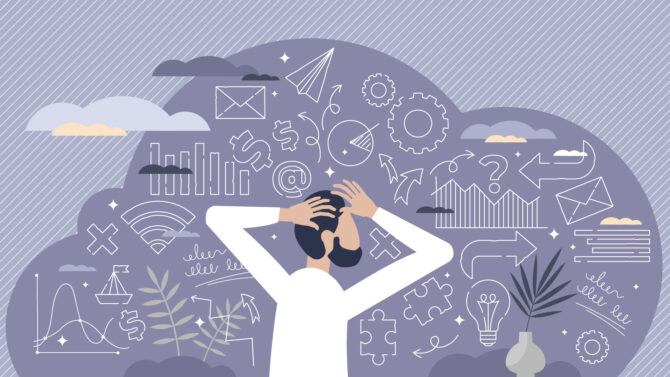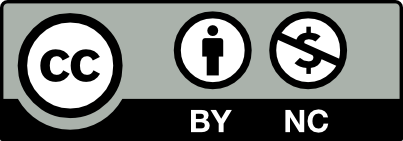Data journalists are reshaping how stories are told and taking a more active role in newsrooms. However, working within traditional newsroom structures presents its own challenges. How do the experts navigate this environment, and what challenges do they often face?
None of them started out as data journalists. But all of them gradually turned to the pursuit of truth hidden behind numbers, in ways that neither those around them nor they themselves initially understood. During the Dataharvest – European Investigative Journalism Conference 2025, held this past May in Mechelen, Belgium, iMEdD spoke with four experienced professionals in the field. They shared their early experiences working in environments unfamiliar with data journalism, as well as their advice for new journalists now taking their first steps in the field.
Data Don’ts: Expert tips to avoid misleading audiences with numbers

Even the most diligent data and investigative reporters can sometimes let numbers get the best of them. Rowan Philp offers essential advice for journalists who aim to tell compelling stories through data.
Leave the lone wolf behind, learn to collaborate
For journalists in “traditional” newsrooms, data journalists are seen as collaborative. “Data journalists work collaboratively, not just within the data team itself, but across desks and across borders,” Pamela Duncan notes, Data Projects Editor at The Guardian. Building the skills for collaboration begins in the newsroom “talk to your non-data colleagues. Ask them if there are stories that they wish they could tell, but don’t have the data skills to do it […]. Help them when they have silly questions about spreadsheets, how to take off a filter, and put on a filter. It’ll show them what skills you have. Just be authentic in wanting to help and wanting to co-write with them.”
When Rob Gebeloff started his career as a data journalist at the New York Times, he was one of the few in the newsroom. “The strategy I had to come up with is almost like selling, I had to sell myself. And say, ‘The story you’re working on, we could make better if we actually tried to measure it with data, as opposed to you asking the opinion of three people.’ […] It’s a form of networking in the newsroom, but it’s not networking for career advancement, it’s simply to make story partners and to make collaborations.”
Just like the reporter who is looking for the best source, Gebeloff suggests that you ask the question: “Which reporters are doing the most interesting stuff? Which reporters are doing this stuff that could have an impact on?”
Sell the stories, not the data
Time is the best friend of data journalists and newsrooms don’t have much of it. Both Duncan and Eva Belmonte, data journalist and co-director of the independent, non-profit organization Civio in Spain, suggest that you should sell your story, not your speed and that means you must carve out time for it.
“I’ve stolen this advice from a very great editor of mine, Helena Bengtsson. Helena always said, ‘Be the spider.’ And she meant, don’t wait for new stories to come to you or for collaborations to happen. Be the person that makes these things happen,” says Duncan. “Stories are the currency of the news desk. Saying to a news editor, ‘I have a big dataset, let me look at it.’ It’s not helpful. What you need to do is find the story. Sell the story, not the data.”
For Belmonte, topics need to withstand the test of time.“We are talking about a huge story that can be temporal, and you can publish it and work from that a lot in your newspaper.”
Not everyone understands what you do, so explain it
Miguel Ros Garcia, Data Analyst and Journalist at Newtral.es, is the only member of his team who works exclusively with data. Although he has a traditional journalistic background, data caught his attention. No matter how much knowledge he has, he knows that the important thing is for much of what he knows to be understood by both readers and his colleagues.“The main difficulty is explaining difficult concepts, clarifying them, and how to communicate them to a normal user who is in their homes and doesn’t want to think about weird things.” He mentions that, often, the process is similar for his colleagues as well.“We have all been students, so we don’t come into the world with all the wisdom, so it’s normal to ignore things, it’s the most common thing in the world, so repeat it, explain it the necessary times.”
Set boundaries and stick to them
Seventeen years ago, when Gebeloff started working as a data journalist at the NYT, many journalists did not want to collaborate with him at all. “Now the problem today is a bit different, which is, almost everyone wants to work with us, but finding what that means and finding the right project. Some people’s definition of working with data journalists is: ‘Can you look this up for me? The answer is no […]. That is the challenge I face now, not finding people to work with, but finding people who want to work with me and treat me like a colleague and not just like a service desk, producing a limited amount of information for them to use in their story. I am trying to find people who want to work on stories together, so it will be our story.”
“I think the challenge can be getting others to understand the full potential and remit that we have,” Duncan adds. Often, if you’re not getting your news from the source, then they don’t give it the proper attention.“Core to what we do is our ability -not just to help with breaking news– but actually break news, because we have the skills through which to interrogate data or collect data that is previously unstructured data. To get stories that nobody else can tell.”
“If there is a case where one journalist always comes at the last minute and says, ‘Oh, I just want numbers for my stories,’ say no. Tell them that’s not the way you operate. If they want you to work with them, tell them you need to be on board from the start of the project […]. Create your boundaries and stick to them.”
Gain knowledge but, first, become a better professional
Belmonte places special emphasis on the knowledge you bring to the journalistic table, and it’s not hard to acquire. “If you want to learn how to do things and not feel so alone on your own, try reading methodologies for people doing data journalism. […] For me, it’s the best way to learn, read how other people did their stuff,” says to iMEdD. But even if knowledge matters, it’s not the only thing you have to offer. “You don’t need to be super technical, you only need to have control of the spreadsheets or how to get data,” she adds.
Duncan agrees: “Attention to detail is key. I mean, I’m not so focused on skills. I need to know that you can scrape in some way, shape or form, but I don’t care if it’s in R or Python or if you use third-party tools. I don’t care as long as you can get the information out and you are determined.”
You work with computers, but you collaborate with people
No matter how well you learn the tricks and tools of programming, social skills are a big part of the journalistic profession. “When we hire people, we are also really looking for human skills”, Gabeloff mentions. “We don’t want somebody who’s brilliant but doesn’t know how to relate to other people because that person will not be very effective.
“You’ve just got to be, and in Ireland we have this word like sound, like ‘sound’. But it means a good, like a person that you can get on with,” adds Duncan.“Because collaboration is so key to what we do, somebody who is going to fly off the handle, somebody who’s an angry person or too shy. It’s a requirement to be good with people.”

